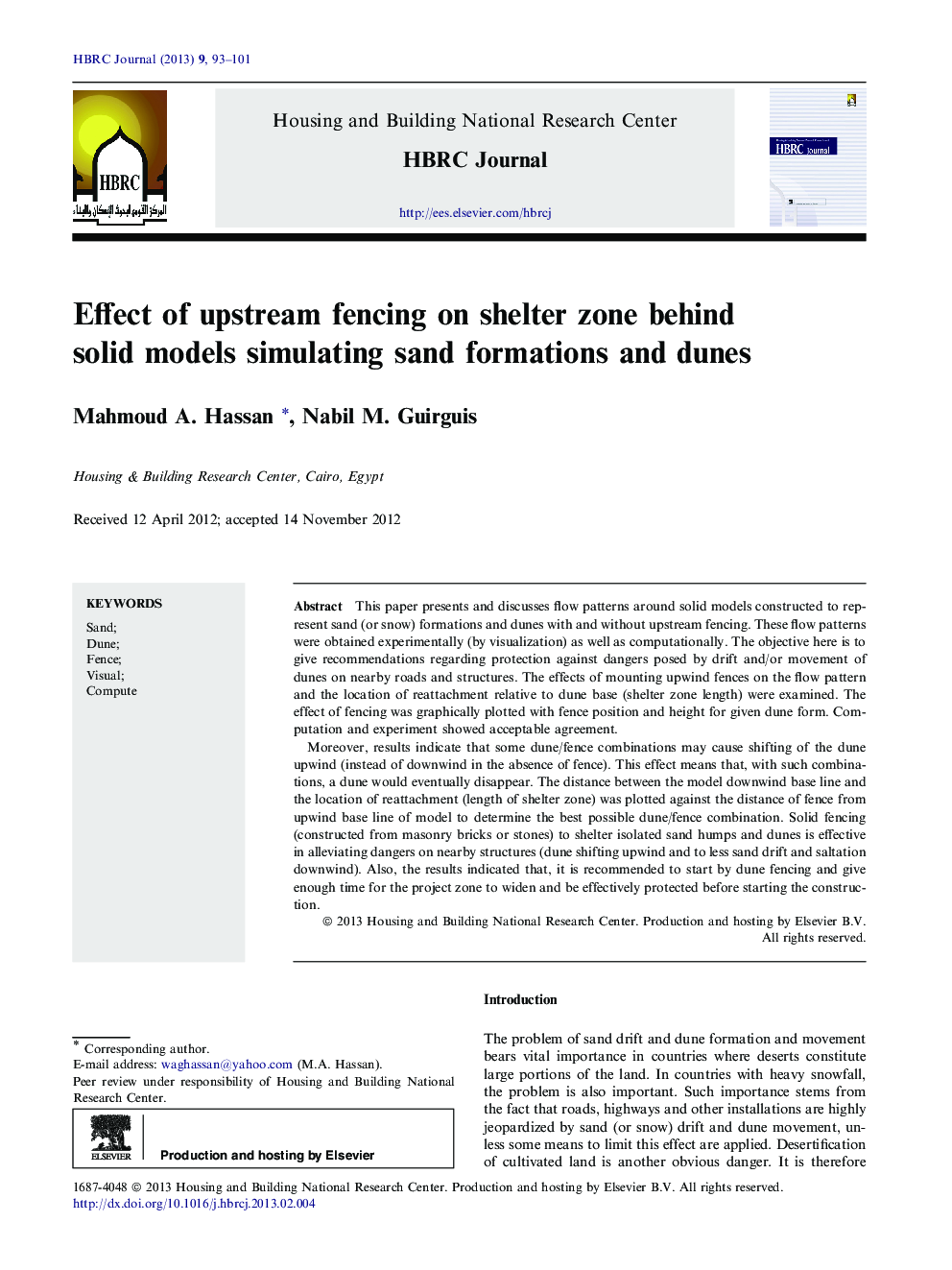| Article ID | Journal | Published Year | Pages | File Type |
|---|---|---|---|---|
| 274739 | HBRC Journal | 2013 | 9 Pages |
This paper presents and discusses flow patterns around solid models constructed to represent sand (or snow) formations and dunes with and without upstream fencing. These flow patterns were obtained experimentally (by visualization) as well as computationally. The objective here is to give recommendations regarding protection against dangers posed by drift and/or movement of dunes on nearby roads and structures. The effects of mounting upwind fences on the flow pattern and the location of reattachment relative to dune base (shelter zone length) were examined. The effect of fencing was graphically plotted with fence position and height for given dune form. Computation and experiment showed acceptable agreement.Moreover, results indicate that some dune/fence combinations may cause shifting of the dune upwind (instead of downwind in the absence of fence). This effect means that, with such combinations, a dune would eventually disappear. The distance between the model downwind base line and the location of reattachment (length of shelter zone) was plotted against the distance of fence from upwind base line of model to determine the best possible dune/fence combination. Solid fencing (constructed from masonry bricks or stones) to shelter isolated sand humps and dunes is effective in alleviating dangers on nearby structures (dune shifting upwind and to less sand drift and saltation downwind). Also, the results indicated that, it is recommended to start by dune fencing and give enough time for the project zone to widen and be effectively protected before starting the construction.
